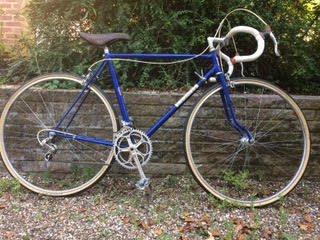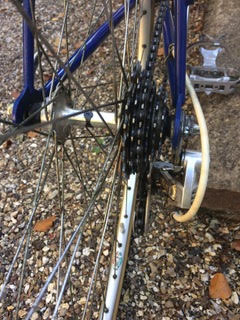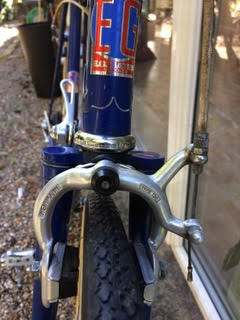Vol. 2, Issue 78 - November / December 2018
Posted: Friday 16th November 2018
Autumn is here – so here is all you could ever need to know about fitting mudguards:
I recently had an unplanned brush with the law of unintended consequences when fitting mudguards to my Gillott Fleur de Lis (sic). Having sold some of our collection I realised that I now have only one machine fitted with mudguards ready for our winter season of rides, that is my R O Harrison Lyta.
The Gillott is what was known as a road/path machine back in the 50s. This was an era when many club riders would own just one lightweight and the road/path with track ends was very popular amongst those whose ultimate aim was to do time-trials. This was the era of 27” high pressure wheels and the frame would be built to accommodate these with additional mudguard clearance for winter riding.
Another factor would be the use of sprints for racing, which would be advertised at the time as Continental 27”, or what is now known as 700s; you can see that by now there was quite a lot of clearance between tyre/tub and the frame compared with a frame built with close clearance for 700 only (without mudguards). The latter did exist in the 50s but in very small numbers and for track sprinters only – and probably only the top few. Road path machines could also come with braze-ons. My Ephgrave No. 1 with track ends has pump pegs brazed under the top tube and mudguard eyes on both front and rear ends.
The Gillott also has mudguard eyes as part of both front and rear ends and they are threaded with a 2BA thread which is quite rare these days. However, I had a set of four 2BA bolts with cheese head and screwdriver slot. I shall use these until I manage to procure some genuine 50s bolts which often came with hexagon heads. The 2BA is slightly smaller than 5mm and people have been known to drill or re-tap these threads to use the more readily available 5mm washers and bolts.
The setback came as I was fixing the rear mudguard and had set the stays to get as even a curve as possible to allow the guards to follow the wheel. With the rear wheel this is not always an option as the seat and chain stay bridges dictate two of the fixing points and I have yet to find a road/path bike where one can get a sweet radius all the way round.
I realised that with guards fitted, in the case of a puncture the wheel would not pull back far enough in the track ends to release it from the frame without backing into the mudguard with the axle still in the track ends. Time will tell whether it may just clear with the tyre flat but, if that is the case, one has to remember to refit the wheel before inflating the tyre after the dreaded puncture. I have a feeling that I won’t get away with this though, so I will have to make sure that I have a screwdriver to release the stays in order to get the wheel out. With the hexagon bolts this can be done with the bell-ended spanner which could also be used to loosen the wheel nuts. These spanners often fit all of the bolts on a bike but be careful as they also come in modern metric sizes and it is hard to distinguish just by looking at them.
Of course, with a road bike with forward facing rear ends this is never a problem as the wheel goes forward and thus away from the back of the rear mudguard. Even these can be a tight squeeze though so bear this in mind if switching to larger tyres. Only vertical drop-outs are foolproof.
There are other mudguard eyes than the ones brazed onto or part of the front and rear ends of course. Harry Rensch of Paris/Rensch frame fame insists on brazing on his ring-like eyes to the seat stays and forks even though the ends he used already have eyes on them. Patricia’s 1948 Tour de France below shows the Rensch chainstay eyes with the rear-end eyes a few centimetres below:
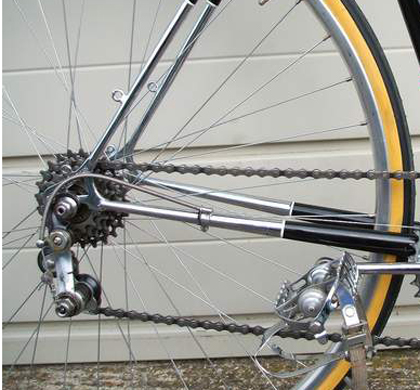
I don’t think we ever used these upper eyes on either of the two Parises we have owned as they look too large diameter and are not threaded. I guess we must have a reader who has used them, and I wonder how it was done – large washers both sides seem to be the answer.
Just when you feel I must have said everything there is to say about mudguard mounting, here we go again.
You may find eyes brazed on the chainstay and forks with rectangular holes instead of round threaded ones. These need matching bolts (usually 2BA) with rectangular heads and come with wingnuts rather than nuts. The bolt head is fed through the aperture from the outside and then turned through 90 degrees. The stays are then fed over the bolt to be secured by the tightening of the wingnut. The idea behind this to make it quicker and easier to remove the mudguards. You may wonder why the hurry but this is for the 1950s time-trial enthusiast who arrives at the 06.00 start, probably at about 05.20 riding his bike on HP tyres with a pair of sprint wheels on carriers. The sprints would be stabilised with toe-straps round the rims and over the hoods of the brakes. Not so easy if riding fixed with one brake!
Our man in the image above has this sprint carrier set-up, and mudguards to ride to the event. On arrival the saddle-bag would come off followed by the sprints. Next the mudguards either with or without the quick-released rectangular bolts. Some people cut off the top of the mudguard-to-brake bolt clip to avoid undoing the brake nut all the way. Now the HPs are removed and sprints fitted – funnily I can never remember re-positioning the brake blocks from 27” to 700 position but our faithful bell-end spanner would do the trick!
Now the bike is ready to have a warm-up ride down the road to check all is OK. Soon it will be time to ride to the start leaving clothes, HP wheels, saddlebag, etc on the roadside along with those of the other 119 riders if it was an open event, less for a club event of course. It was very rare to see someone arrive by car. Some of course just set out from home in race trim and arrived ready to go but old habits die hard.
The Gillott (Fleur de Lis – as Gillott spelt it) with newly-fitted mudguards. Quite happy with the way they follow the wheel except for the rear wheel where it has to meet the chainstay bridge. On some, my 1957 Cinelli for example, the two bridges are tapped for mudguard fixing. On one such machine I managed to space out the bolt between the mudguard and chainstay bridge to close this gap and let the guard follow the radius of the wheel – it doesn’t take much to make an old man happy!
I rode this fixed Gillott on a section ride a few days after the guards were fitted and ended up doing just about 38 miles as it was more of a social ride. I always find that my leg muscles are quite tight the day after such a ride on fixed, much more so than after double the distance on a geared machine with the option for the odd spell of free-wheeling.
One of the biggest bugbears when fitting stays is if they come out too long after the initial fitting. The only answer is to mark the stay, remove it – shorten with a hacksaw and refit. Having said that I have done it with a mini saw and leaving the stay in situ – a nerve-wracking job though as it is easy to put a saw mark on the guard itself. I would use some type of tape to protect the vulnerable area but this is not foolproof.
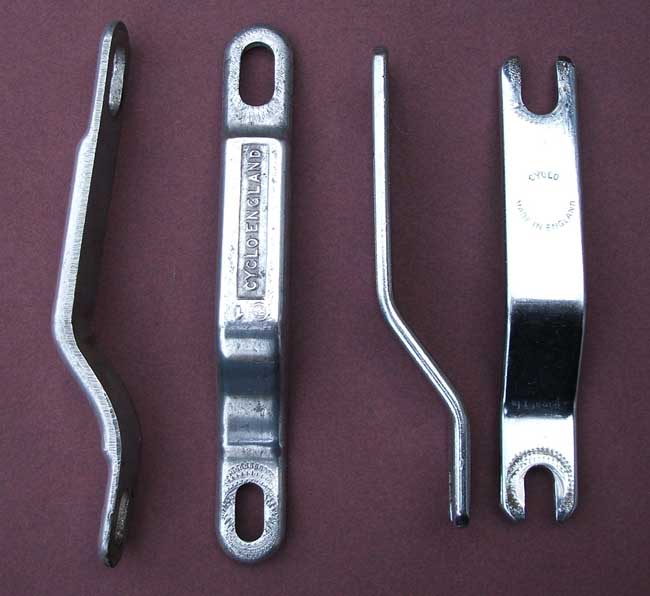
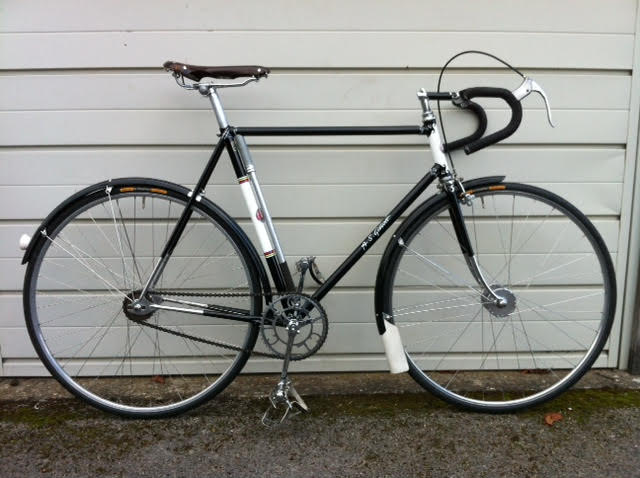
Canal du Midi
Peter Huke comments on our plans to cycle down some canals in Europe as told in the last edition of Lightweight News:
I’ve just been reading your recent newsletter, and your plans to ride the Canal du Midi next year. I thought I’d drop you a line, as four or five years ago I rode a fair bit of it myself, starting from Toulouse and finishing at Montpelier.
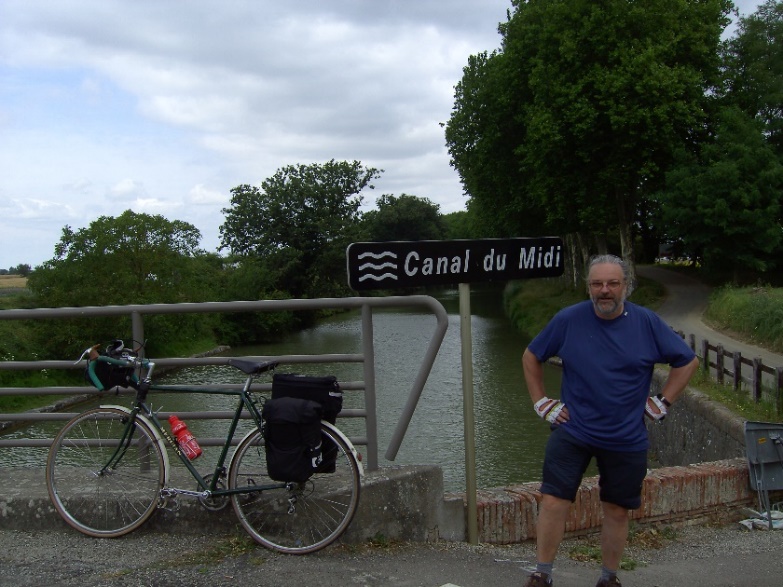
I enjoyed it very much, the countryside was delightful, canalside and meadow views memorable , some obvious highlights such as Carcassone (which has tourist crowds – not suitable pushing a bike , as I discovered !) but
1. I went in July, a big error. Unless you enjoy/can cope with very high temperatures, then the hottest couple of months are best avoided, I reckon. I hadn’t done my research well enough, and some of the hottest days were really tough going.
2. Although the tree-lined towpath is often very pretty, and the overhanging big old trees afforded some shade (see above), in many places the tree roots have grown out (transversely) across the towpath, so that every few yards you hit a three-inch high rock-hard barrier very painful to ride on, and in fact on several occasions I had to come off the towpath and find parallel (quiet) roads, just to have a break from the bumps. Plenty of loose twigs, too: I counted myself lucky that my Mercian ‘only’ lost both mudguards, without once breaking a spoke or tipping me off. At these times, I decided that canals were perhaps best travelled by boat, as intended by their builders: certainly the hire cruisers looked great fun
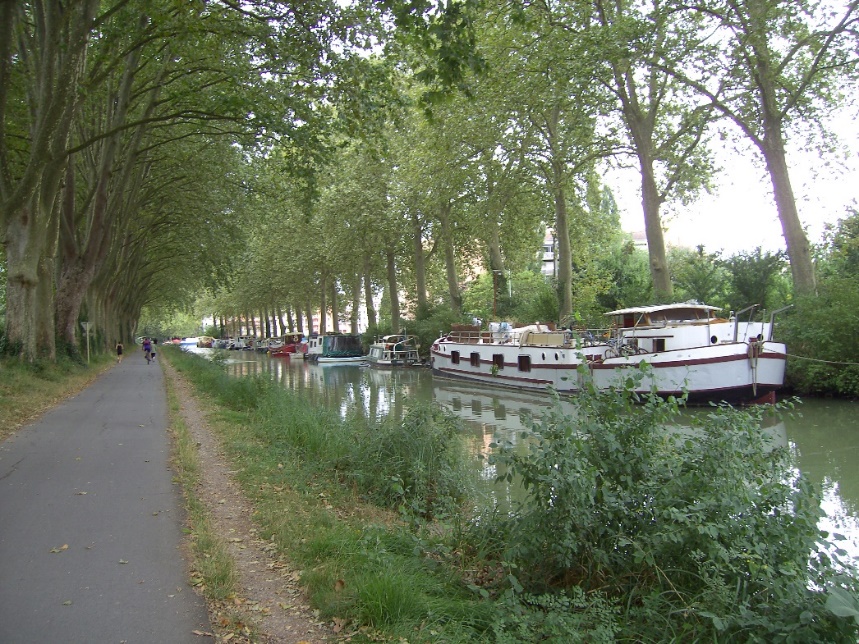
However, the Good News – which relates to your newsletter item. Getting there and back, with my own bike, was the easy bit. I used the European Bike Express service (website something obvious), as I have on three or four other trips. They run a coach service, from various pick-up points in the UK (they come down the A1, more or less – some of the pick-ups have car parking, or are accessible by train: I use the A1/M25 services, riding from home). You then stick your bike in their huge (safe) trailer, and take your seat on the coach. I thought all that way on a coach would be pretty awful – but actually not too bad at all, plenty of stops, reclining seats , food on board, full of cyclists, got some sleep, etc. They have two or three different routes – and the beauty of it is that you can go out on one route, be dropped, do your ride, and be collected somewhere else, on another route (in my case Toulouse and Montpellier, as I said earlier). Of course, you have to fit in with their timetable, and might have to compromise on your start/finish points. Other than that, I’d strongly recommend their service (and although it’s a bit beyond the end of the Canal proper, I enjoyed the bit just before Montpellier as much as anywhere).
I don’t know if any of that helps. It was a memorable ride, and I might try to dig out a couple of pictures. Accommodation wasn’t all that plentiful, as I recall – I think I booked every night in advance, rather than winging it.
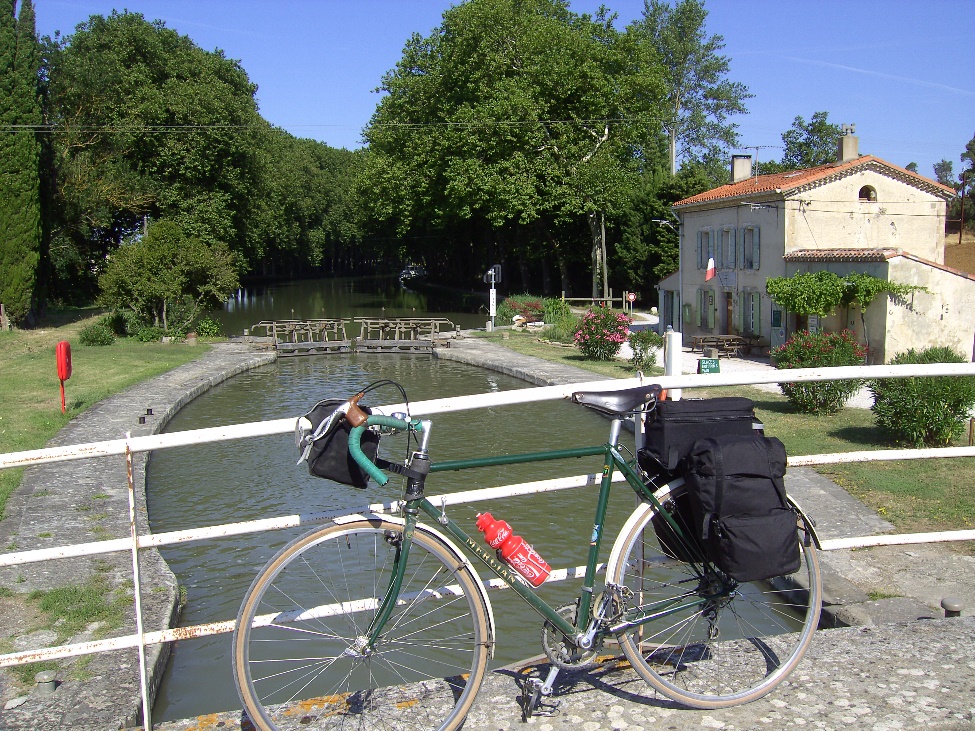
By chance, I’ve also done a bit of the Danube , which you also mentioned, though not your favoured section. I started at the source, Donnaueschingen (?) [using E B E’s coach service to Strasbourg, and riding from there] and went as far as Passau, before turning off to Innsbruck – then train back to Strasbourg, and back on the coach to London. A good path all the way, once again a memorable and very enjoyable trip. Fewer difficulties as far as I recall.
I was excited to read your recent piece on Hinds. I would like to let you know that Hinds built some Moulton frames. It is estimated in the club circles that only around half a dozen were built. I have only seen one, and one photograph of a partial frame. I restored mine in around 2007, if you google “hinds Moulton” it will be first in line. It is white with chrome rear forks.
Their unique selling point was an extra piece of tubing behind the seat post, in order to accommodate a double chain ring mechanism- not possible with the existing seat post due to diameter.
Mine had a very early narrow bellows frame with series two speed six rear forks. It also had a longer seat post with a different clamp, and a very distinct frame number (6 I think). The bike originally belonged to an Italian racer but I can’t remember more than that.
What I do remember though, and still gives me night terrors, is sanding down the frame. It was covered in red oxide primer to protect it. I started sanding it back where the Moulton logo usually is. There was nothing there so I continued through the original burgundy back to bare metal. As I worked my way along the main tube I began to uncover some hand painted, sign written capital letters! It still chills me to think with more patience, I could have saved the original finish. Since then, original paint is sacred to me.
I sold the bike to a Doctor who came specially from Germany to buy it.
By chance, I stumbled across a webpage on Vic Edwards in your website, my information might be considered ‘scant’, but it also might be of some use?
I was born and bred Chadwell Heath, so back in the late 1960’s we had our local bike shop, “Pasks”, at the Romford end. I had no knowledge about Vic, or his links/connections and workshop in Crow Lane. So, imagine how I reacted when I saw that he built bikes on my doorstep and just one set of traffic-lights from Pasks. Back in Christmas 1971 we went into Pasks for my Mother to buy me a new 26-inch wheel Racing-Bike. Naturally, I’d outgrown my first bike (a crimson and blue Elswick-Hopper) and wanted something ‘fast’ (laughs).
The owner/manager at Pasks steered us into an expensive but peachy looking “Edwards” Black and Gold racing bike. As a kid back then, I’d never heard of Edwards (well, it WAS only my second bike). It was very well crafted with, now looking back – neat welds and Reynolds tubing.
The crank and pedal gear was finely crafted too and the bike was very well equipped for its time. Having said that, there was no ‘flim-flam’ or extraneous accessories, just a classy looking race bike. I loved that bike and my life pretty much revolved around it all through the 1970’s and early 1980’s, until I learned to drive.
It languished at home from about December 1979 with an odd few trips, till around early 1981 by which time I’d bought both a sports-coupe car and a brand-new Suzuki.GSX.250 motor-cycle.
By 1988 the once proud Gold-enamelled frame, both paint and frame were high-quality, had deteriorated. This might sound sacrilege, but I sanded it down, stripped it and re-sprayed it Matt-Black, but a very neat job. I used it daily to cycle to Dagenham-East station until around February 1990.
Like I say, Crow Lane and Pasks were just about 500-700yds apart, just Whalebone Lane separating them so it makes sense that Vic would sell his product on his very own doorstep.
Kevin Hudson (Ex-Chadwell Heath & Romford citizen).
Vintage Bates Bike for sale – £625 (Beaconsfield, Buckinghamshire)
I am selling my Dad’s Bates bike which he thinks was bought in 1951. The Bates frame was hand built with Cantiflex tubing and with the distinctive Diadrant front forks. 21 ½” frame.
The previous Simplex gears have been replaced by Shimano 600 gears, front and back. Shimano 600 one key release crankset. Weinman alloy brakes, front and back. Concor saddle. Ambrosio alloy drop handlebars. Harry Hall quick release alloy wheels with new Schwalbe tyres. I am not a bike expert/enthusiast but if you have any questions, I will do my best to answer them and I have more images showing details.
Walvale decals for sale.
Made to the original designs – self adhesive. Head/seat x2 + large downtube unique lettering white edged with black x2 + small top tube/downtube similar x 2. £6.00 per set including postage to the UK.
Veteran-Cycle Club
The 7th North London Section CYCLE JUMBLE
Saturday 17th November 2018
Tewin Memorial Hall, 11 Lower Green, Tewin, Hertfordshire. AL6 0JX
Time : Buyers : opens at 9.30am and closes 12.30pm
Stall and pitch Holders: available from 8.15am and everybody out by 1pm.
Prices : Admission £1 for Buyers. Pre 9.30am entry, £3.
Stalls and selling pitches : inside or outside £7. Only CLEAN jumble inside where a single table will be provided. Outside pitches in car park.
Parking : Free. Some parking available at adjacent bowls club. If parking in village be considerate please as we wish to come back next year.
Refreshments and indoor seating area available.
Tewin is a small village to the west of Hertford. It has pleasant lanes surrounding so make a cycling ay of it. There are two pubs to retire to when the buying and selling becomes too much.
Tewin is minutes off J6 of A1(M), Welwyn Garden City.
Railway Stations : Hertford (3 miles) : Hertford North – Kings Cross/Stevenage line, Hertford East – Liverpool Street line. Welwyn North : (3.5 miles) – Kings Cross – Cambridge/Peterborough Line.
Posted: Friday 16th November 2018
This article appears in the following categories.
Upcoming Events
Whether you are looking for a gentle social meet up, or a 100-mile ride browse the community’s upcoming events and plan your next weekend outing.

